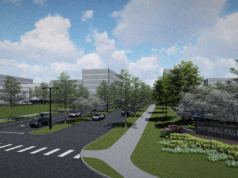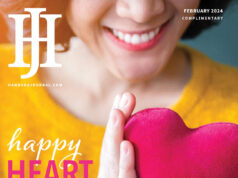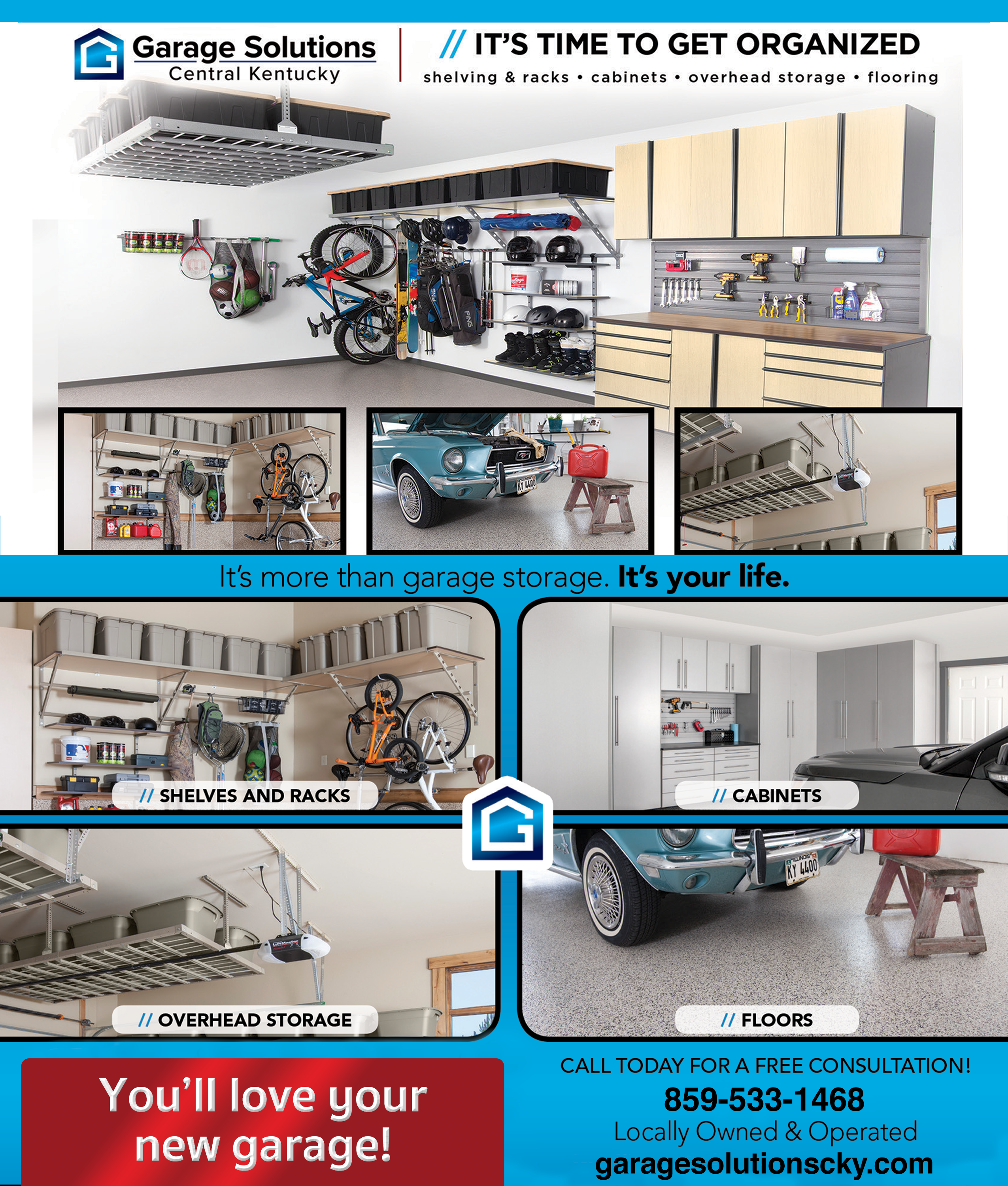The Cure is You: February is American Heart Month
BY KIM THOMAS
It’s not all flowers and candy.
In February, we don’t just think of hearts for Valentine’s Day…we think of American Heart Month. Cardiovascular disease — including heart disease, stroke, and high blood pressure — is the number one killer of American women and men.
 Like our good frenemy the snowflake, no two episodes of cardiovascular events will be the same. You may undergo *CABG (coronary artery bypass graft surgery), or be blessed with a new lease on life with a heart transplant, or need stents (21 in the case of one subject we interviewed).
Like our good frenemy the snowflake, no two episodes of cardiovascular events will be the same. You may undergo *CABG (coronary artery bypass graft surgery), or be blessed with a new lease on life with a heart transplant, or need stents (21 in the case of one subject we interviewed).
Every case stands alone and much can be derived from listening to heart patients and their stories. For Heart Month, I have heard stories of 21 stents (for one patient), four bypasses, and ten surgeries — to hear their narratives is fascinating.
All of the subjects shared one thing in common — they didn’t realize they were about to become cardiac patients. That’s why awareness campaigns during American Heart Month can be so important.
Kathy Hobbs and Fred Zegelian both suspected indigestion initially (and both were young and otherwise healthy). Dick Gabriel knew something wasn’t quite right. An observant doctor caught the irregularities during a routine physical, before he progressed down the track to a close encounter with the “the Widowmaker.”
The subjects profiled all have busy lives and careers that require much focus. They’ve agreed to share their experiences with us so that readers can be aware of when and how it is important to seek medical attention (and to learn CPR). With an astonishing 80 percent of all heart attacks and strokes being preventable, it is clear that the American Heart Association is right: the cure is YOU!

DICK GABRIEL tells me he ignored the warning signs for years.
“I kept telling myself I was in terrible shape because I would get winded just while swimming or in the middle of karate class.” He even thought perhaps he was allergic to something in Chiang Thé’s dojo.
“Thè often would ask us to battle stand and fight, and I love that exercise, but I found myself breathless… with no pain, no tightness, or pressure. However I was aware of the fact that when I swam, it was taxing …and I kept thinking that tingling in my arms would go away. I would lie down and become short of breath; then would sit up and feel better.”
“Finally I had a routine physical and they put me on a treadmill, where the technicians kept remarking how well I was doing. My heart rate was wonderful, but my GP, Dr. Clark Bailey (Barbara Bailey’s brother) saw a blip on the EKG and said, ‘I will call you Thursday.’ Thursday came and went; I did not hear from the doctor, so I didn’t worry. Then on Friday at 8:40 pm, I got a call on my landline and knew something was wrong. He told me he had spotted something and that I needed to come in for a procedure right away. As it turned out, I had an 80 percent blockage on one side and 90 percent blockage on my left descending artery. That is called the Widowmaker, my wife informed me later, and it can kill if it attacks you or stops working even in the lobby of the hospital. So, I am fortunate to have made it through, and immediately felt relief after both stents were placed.”
Gabriel is a familiar voice to anyone who listens to sports coverage on WUKY-TV or WLAP radio. He’s an award winning sportscaster and the Big Blue Nation can listen to him on his radio show, The Big Blue Insider, weeknights at 6:00 on WLAP. He also hosts and produces UK sports shows on WUKY and is an on-field/on-court commentator for the Wildcat broadcasts.
Since women have different warning signs than men do, it’s no surprise that Kathy Hobbs says her heart attack happened in a way that was very different from what you typically hear about heart attacks, or see in the movies (where someone clutches their heart and collapses). She had no pain, but was bothered for weeks by a discomfort in her chest that would simply go away after a few minutes.
Hobbs is a founder of Fantastical Theatricals, a murder mystery dinner theatre troupe. She has written many of her shows, and of course her attack happened when she was preparing for a Doctor Who spoof that was near and dear to her heart, no pun intended.
She remembers the awfulness of realization. “I had been having this strange sensation in my chest. It had been happening occasionally for around a month. It wasn’t pain at all but it was pressure, directly behind my breastbone and sometimes radiating to my back. I had tried to convince myself that it was gas, or GERD. I thought maybe it was a heart issue, but dismissed the idea because it just didn’t hurt. I would drink some water, maybe make myself belch and in a few minutes the pressure would go away. I even thought perhaps it was an allergy to something I was eating. I was snacking on raw almonds and dried cherries often and wondered if it might be a super-sensitivity to the traces of cyanide both cherries and almonds supposedly contained.”
“One morning, the pressure seemed particularly bad; it woke me up and simply wouldn’t go away after about 20 minutes, (the pressure had never lasted longer than 5-7 minutes and certainly had never woken me before) so finally I had to admit SOMETHING was definitely wrong.
“I called the ambulance, told them I thought I might be having a heart attack and sat down to wait. I wanted to take an aspirin, but there was none in the house. I sat down to wait, but didn’t have to wait very long. [When they arrived] the EMTs immediately took my blood pressure. My systolic was well over 200 and they could not get a dystolic reading for me. I was loaded onto a gurney and into the ambulance, where they gave me a nitroglycerin tablet to dissolve under my tongue and began to insert a saline drip. I don’t remember if they were successful.”
Once she arrived at the hospital, she endured a frustrating wait in the emergency room. “Of course, you are assessed right away if a heart attack is suspected, and I was put on an automated blood pressure cuff that would take another reading every 15 minutes. My wait in the ER examining room was over 8 hours. I did not see a doctor in all that time. I arrived before 9 am. Finally, around 5 I was wheeled into the heart lab. The cardiologist reiterated what his assistant told me earlier, that if a blockage was found they would immediately insert a stent and I would need to be on blood thinners for a full year. No one would give me any idea as to what the medicine would cost. But of course I had no choice here. I was given twilight sedation while they inserted a catheter and found a complete blockage in one artery. When I was in my hospital room recovering, I was finally given an idea as to what my blood thinners would cost — around $350.00 a month! WITH insurance. I asked to receive different prescription, since I knew there were generic blood thinners available, but was refused; Brilinta was the only option. ‘It’s just better,’ was the only explanation given. ‘Is it better if I can’t afford to buy it?’ No answer.”
“Then the very worst moment of the entire episode happened. I had to call my mom and tell her I was in the hospital recovering from a heart attack. The nurse on duty that night was awesome, she saw to my comfort as soon as she could, got my pain med to me so I could finally be comfortable and relax a little. She even noticed that I didn’t finish my dinner. ‘You don’t like tuna fish?’ she asked, totally getting it. ‘I’m sorry, I tried but I just can’t eat it.’ I really cannot stand tuna fish, ever. ‘No problem,’ she laughed ‘We just got BBQ sandwiches delivered. I’ll get you one.’ So before I went to sleep, my first meal after my heart attack was a really tasty pork barbecue sandwich, that I ate between giggles. Finally something to laugh about! It had been a long, surreal day!” she exclaims.
After Hobbs was released, she found it nearly impossible to complete her post-surgical care. “My discharge papers stated that my follow-up needed to happen in two weeks, but the cardiologist’s office was scheduled to move into a new office, so my appointment was actually 3 weeks later. When I called to find out where the appointment was (they had neglected to give me the office’s new address) the office was closed, because the move was taking longer than they expected. Eventually, I received a call to reschedule, a total of 5 weeks after my heart attack.”
Despite her harrowing experience, today Hobbs is off all medications and feeling fit as a fiddle. Her Fantastical Theatrical company performs at the Chop House on Richmond Road and she has shows booked in several state park venues for the next few months.

Fred Zegelian is a veteran actor in the central Kentucky theater community. This past year he starred in shows at Studio Players, and his next venture will be at the Carriage House as well. This may serve as a cautionary tale to those who just went through the 2016 snowstorm: Fred had his first heart attack after he went sled riding for the first time in his life.
He recalls how it all began.
“My First Event happened in the winter. On one snowy day during lunch with co-workers, I had mentioned that since I grew up in Florida, I had never been sledding. Rob (a co-worker and a really good friend) said that he had his son’s sled in the trunk of his car. There was a huge hill close to work that was used as a sledding run during snowy times. He suggested that during lunch break the next day, why don’t we go and I can sled for the first time. I was real excited about the prospect. The next day, about six of us traveled about three miles to the sledding sight. I was given basic instruction then carried the sled up the hill. When I got to the top, I thought to myself, ‘Man, I need to work out!’ I was winded and felt a little dizzy, but it was cold and I was excited. I took the sled to the top, jumped on, and went for a wild ride. It was exhilarating and so much fun! When I reached the bottom with a big smile on my face, I wanted to go again. So I grabbed the sled and headed back up the hill. Again, I felt winded and out of shape, but as soon as I started down the hill, all that seemed to go away. It was time to go back to work. I thanked Rob and my good friends for the opportunity and we headed back. Back at my desk, I opened my meager lunch that I’d brought, ate while I worked, and relived the wondrous moment of winter that I had just experienced for the first time.
“After about 20 minutes, something didn’t feel right. There seemed to be a bubble in my chest. Then the pressure started, felt like someone was sitting on my chest. I thought it was indigestion. Really bad indigestion. My boss was out for the day, so I went into her office, closed the door, and laid down on the floor. After taking deep breaths for a few minutes, I felt better. Went back to my desk. In less than 5 minutes, the pressure was back. This time, I started feeling dizzy, in the crook of both elbows I could feel my pulse. I then lost my lunch in the trashcan. At this moment, I thought that the sandwich I ate must have been bad. I was just trying to figure this out. One of the co-workers who sat close to me asked if I was alright. I said I might have eaten something bad and was going home. I shut down my computer and started to stand up and immediately sat back down. As I put my head in my hands to try and get my bearings, said co-worker mentioned that my hands were blue and she was calling 911. Fortunately, a brand new 911 Response Facility had been built literally next door to the office. They were at the office within 2 to 3 minutes. I must have looked a fright, as the EMT didn’t really ask what was wrong, he seemed to know. They immediately strapped me on a gurney, placed an oxygen mask on and I was rolled out of the office while everyone in the office stood agape with hands over their mouths. Once in the ambulance, I was given three baby aspirin and a nitroglycerin tablet. This couldn’t be, I thought, I’m only 43 years old and sure, I was out of shape, but for goodness sake! One young EMT was extremely kind during my trip to the hospital and tried to keep me from freaking out. The next hour was a whirlwind. I was whisked into Cardiology and then into surgery within minutes. The angioplasty was explained to me while local anesthetic was given. Before I knew it, I was watching on a monitor the catheter as it snaked its way into my heart. I was in the recovery room for two hours, then placed in a hospital room for three days. Upon release, I attended a meeting with a dietician, attended cardio rehab, and met with a Cardiologist. Upon receiving my instructions and medications that I will be on for the rest of my life, I went home. That is when I got real scared. The incident had happened so quickly and I went from leaving the house for work at 6:30 a.m., to arriving home days later as a changed man (literally). The next few days were a whirlwind of nightmares and thoughts of what could have happened. It took weeks to heal physically, however, it took months to heal emotionally. Eventually, I did.”
Two Years Later: “Feeling great. No problems. Quit smoking. Staying on my medications. Modified my diet. Actually exercising for the first time in my life. Lost about 15 pounds. Now it is time for my annual visit to the hospital to see my Cardiologist for a stress test. Took the day off work so that afterwards, I could go shopping and visit my favorite Greek restaurant before heading home. Arrived on time and after a half hour or so, I was called back. I changed into my t-shirt and workout shorts, climbed on the treadmill, and watched as I was being attached with cables all over for the EKG to read the results. All the while, joking and making small talk with the nurses. No problem. I’ve been working out. I can handle this. The treadmill begins it slow churn, I walk, then trot and pretty soon a full run. Feeling pretty good. Sweating a lot, but oh well. Heart rate up to 120. Technician says they want to get it to 160. No problem. Keep pushing forward! All of a sudden, I began to see stars. You know, those little lights that appear sometimes? I lost my grip of the treadmill handle and started to slip. The nurse said I have to hang on. I said, ‘I can’t feel my fingers.’ Another nurse, whispers something to the Technician and he made that motion with his finger across his throat. Everything stopped. I couldn’t breathe and was still seeing stars. Then became nauseous. I was unplugged, and a gurney appeared out of nowhere. I was taken immediately to surgery. I remembered what those lights above looked like as I lay there, being driven at warp speed to the cardiac lab. Again, another heart attack, another blockage, and another stent. Technology had advanced over the past two years, so now the catheter was smaller, and the procedure went quicker. I was only in the hospital overnight this time. How could this happen? I’ve been doing everything right?” he wondered.
Today Zegelian is preparing for his role in Studio Players’ Clybourne Park, working at UK, and maintaining his cheerful outlook with the help of his pups, Cooper and Rocky. “It took a while to get back to normal, but I did. Still going and that was 11 years ago. I had a couple of setbacks here and there, change in medications, but overall doing well!,” he says gratefully.
Zegelian stresses the importance of informing the doctor of all symptoms as well as paying attention to family history. His family tree is full of heart patients!
The American Heart Association tells us the use of CPR dates all the way back to 1740, yet even today, most Americans don’t know how to perform it.
Cardiac arrests are more common than you think, and they can happen to anyone at any time.
Nearly 383,000 out-of-hospital sudden cardiac arrests occur annually, and 88 percent of cardiac arrests occur at home.
Many victims appear healthy with no known heart disease or other risk factors.
The life you save with CPR is mostly likely to be a loved one. Four out of five cardiac arrests happen at home. Statistically speaking, if called on to administer CPR in an emergency, the life you save is likely to be someone at home: a child, a spouse, a parent or a friend.
This article also appears on page 10-12 of the February 2016 printed edition of the Hamburg Journal.
For more Hamburg area news, subscribe to the Hamburg Journal weekly digital newsletter.












